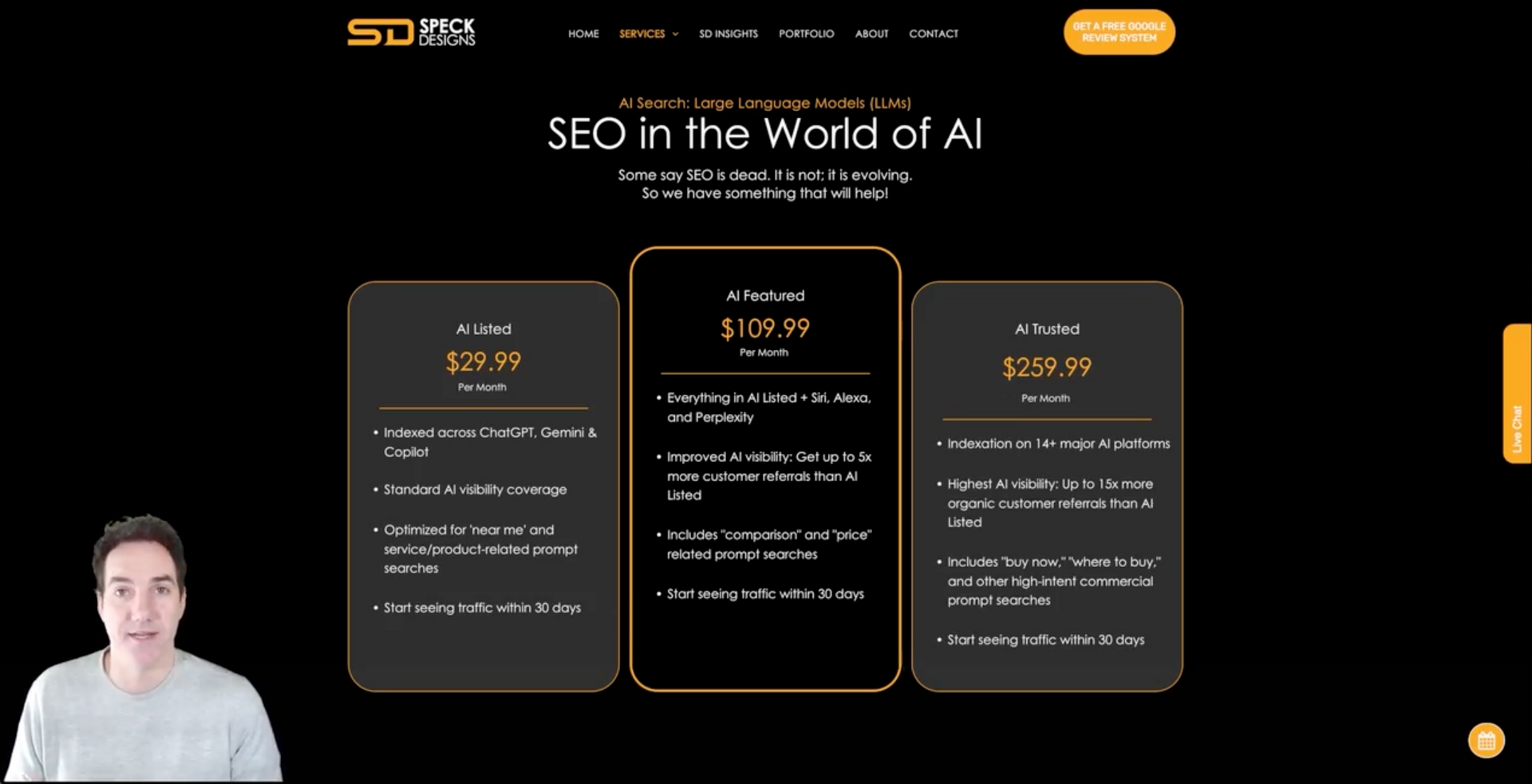10 Terrible Website Mistakes Easily Holding Back Your Business
Your website often gives customers the first impression of your business. If it's not optimized for user experience, search engines, and conversions, you could be losing valuable leads and revenue. A poorly designed or neglected website can turn potential customers away, damage your brand’s credibility, and impact your search rankings.

1. Slow Loading Speed
A slow website is one of the biggest barriers to user engagement. If your site takes more than a few seconds to load, users will abandon it before even seeing your content. Studies show that even a one-second delay can reduce conversions by up to 7%. Additionally, search engines like Google penalize slow websites, making it harder for you to rank in search results.
Fix:
- Optimize images by compressing them without losing quality.
- Enable browser caching to reduce load times for returning visitors.
- Use a content delivery network (CDN) to speed up loading times for users in different locations.
- Invest in a high-quality hosting provider to ensure fast server response times.
- Regularly test your site speed using tools like Google PageSpeed Insights or GTmetrix.
- Work with a professional web design and development team to improve your website’s metrics.
2. Not Mobile-Friendly
With more than half of internet traffic coming from mobile devices, having a mobile-friendly website is no longer optional. If your website isn’t optimized for mobile users, you’re losing a significant portion of potential customers. A poor mobile experience results in high bounce rates and lost conversions.
Fix:
- Use responsive web design so your site automatically adjusts to different screen sizes.
- Ensure buttons and links are easily clickable on smaller screens.
- Avoid using Flash or other outdated technologies that don’t work on mobile.
- Test your website across various devices and browsers to ensure a smooth user experience.
- Use Google’s Mobile-Friendly Test tool to check and improve your site’s mobile usability.
3. Poor Navigation
A confusing or cluttered website layout makes it difficult for visitors to find what they need. If users struggle to access information quickly, they’ll leave and seek alternatives from competitors.
Fix:
- Simplify your website’s navigation by using clear, descriptive menu labels.
- Implement a well-organized structure with logical categories and subcategories.
- Include a search bar to help users find specific content quickly.
- Make sure important pages (e.g., Contact, Services, About Us) are easily accessible.
- Limit menu items to avoid overwhelming visitors with too many choices.
4. No Clear Call-to-Action (CTA)
Visitors need guidance on what to do next when they land on your site. If there’s no clear call to action (CTA), they may leave without taking any meaningful action, such as signing up for a newsletter, making a purchase, or contacting your business.
Fix:
- Place visible and compelling CTAs on every page.
- Use action-oriented language like "Get Started," "Download Now," or "Contact Us Today."
- Ensure CTAs stand out with contrasting colors and strategic placement.
- A/B test different CTA styles and wording to see what drives the best engagement.
5. Low-Quality Content
Your website should provide valuable, engaging, and up-to-date content. Outdated, poorly written, or irrelevant content can make your business appear untrustworthy and unprofessional.
Fix:
- Regularly update your blog, product pages, and service descriptions.
- Focus on high-quality, informative, and original content.
- Use SEO-friendly headings and subheadings for readability.
- Avoid jargon and use clear, concise language that your audience understands.
6. Ignoring SEO Best Practices
If your website isn’t optimized for search engines, potential customers won’t find you. Ignoring SEO means missing out on valuable organic traffic that could lead to conversions.
Fix:
- Use relevant keywords naturally within your content, headings, and meta descriptions.
- Optimize image alt tags and URLs for SEO.
- Improve site structure with internal linking to help search engines crawl your pages.
- Ensure proper indexing by using Google Search Console.
- Regularly monitor and update your SEO strategy to align with algorithm changes.
7. Lack of Social Proof
People trust businesses that have positive reviews and testimonials. Without social proof, visitors may hesitate to engage with your brand, leading to lower conversion rates.
Fix:
- Showcase customer testimonials and case studies prominently on your site.
- Display Google, Yelp, or Trustpilot reviews.
- Use real customer images and names to add authenticity.
- Highlight any awards, certifications, or partnerships to build credibility.
8. Annoying Pop-Ups
While pop-ups can be useful for capturing leads, overusing them can frustrate users. Intrusive pop-ups that appear immediately or block content can drive visitors away.
Fix:
- Use exit-intent pop-ups that appear when users are about to leave.
- Ensure pop-ups are easy to close and not disruptive.
- Limit the number of pop-ups per visit.
- Provide value in your pop-ups, such as a discount code or useful resource.
9. Complicated Checkout Process
A lengthy or confusing checkout process can lead to high cart abandonment rates. Customers will leave if they find it difficult to complete their purchase.
Fix:
- Simplify the checkout process with fewer steps.
- Offer multiple payment options (credit cards, PayPal, digital wallets, etc.).
- Enable guest checkout so users don’t have to create an account.
- Display progress indicators to show how many steps remain.
- Ensure the checkout page is secure with SSL encryption.
10. No Contact Information
Customers need a way to reach you. If your contact information is hidden or missing, it creates distrust and frustration.
Fix:
- Place your contact details in a visible location, such as the header or footer.
- Include a contact form, phone number, email address, and physical address (if applicable).
- Add a live chat feature for real-time customer support.
- Ensure response times are quick to build customer trust.

Avoiding these website mistakes can significantly improve user experience, increase conversions, and enhance your profits. A well-optimized website not only attracts visitors but also turns them into loyal customers. Regularly audit your site, keep up with best practices, and make necessary adjustments to stay ahead of the competition. Investing time in improving your website today can lead to long-term business success!
If this seems overwhelming or you don’t have the time, contact us at 616.259.4359 or designs@speckdesigns.com and we will provide you with our recommendations.









